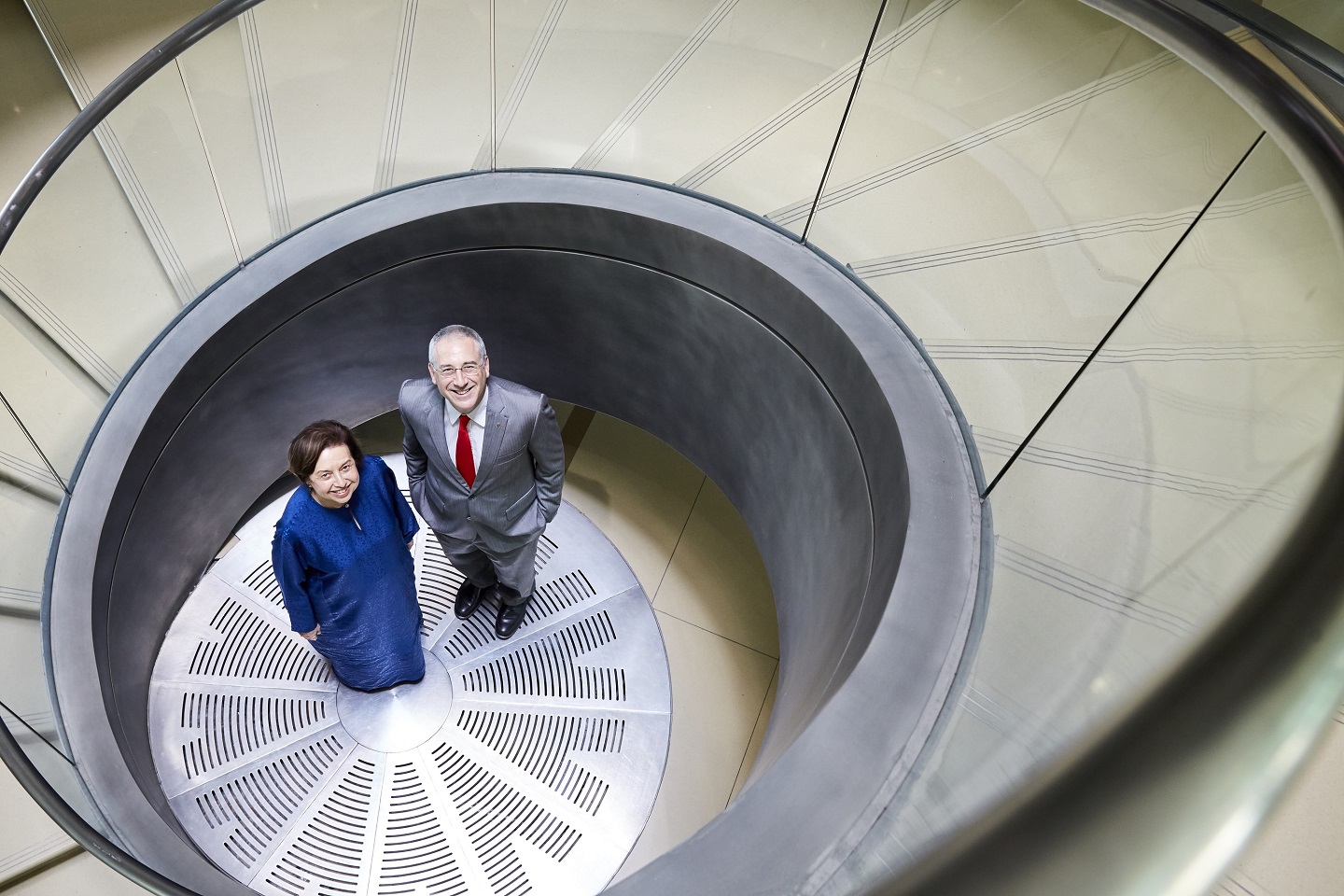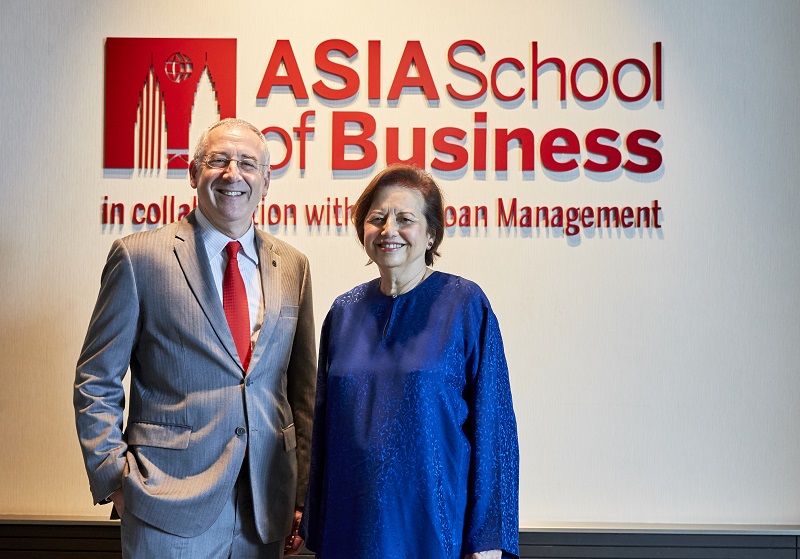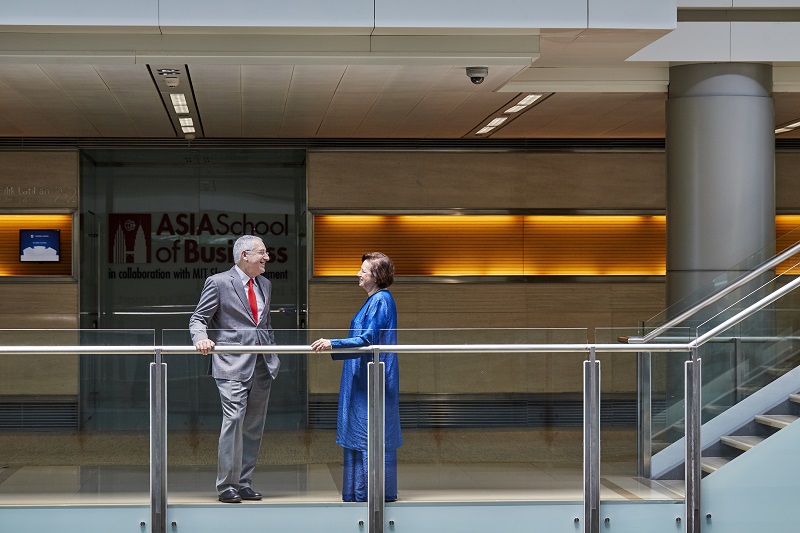
(Photography by SooPhye)
As the old saying goes, “The world is a university and everyone in it is a teacher”. But what if the world is encompassed within a university instead and the ideas and discourse of its educationists and students alike spark exciting new streams of learning and knowledge exchange? Certainly, many great universities fall easily into this category but few actually have the privilege to actively chart their own horizons, to map out their own definition of, to steal a phrase from Aldous Huxley, a brave new world. One institution that has been accorded this honour is Malaysia’s very own Asia School of Business (ASB).
The K-economy
The school’s inaugural MBA Class session began last August but the seeds of a new, innovative and unconventional business school were planted in January 2015, an idea mooted by the former (and it must be said, first lady) governor of Bank Negara Malaysia, Tan Sri Dr Zeti Akhtar Aziz, herself the daughter of the country’s most illustrious educationist, the royal professor and former vice-chancellor of Universiti Malaya, Ungku Abdul Aziz Ungku Abdul Hamid. “Bank Negara has always believed in investing in people,” says the soft-spoken Zeti, dressed, elegantly as always, in her signature blue baju kurung, in our interview within the light-filled and titanium-crafted Sasana Kijang. “And, from our experience, having done so for several decades at the bank, the payoffs that arise [from investing in people] have been almost immediate and significant.”
Investing in human capital is laudable but certainly nothing new. What the former governor chose to do was lift things several notches. The establishment of ASB is basically a Malaysian initiative but with a global and far-reaching footprint. Its mission is to harness some of the best and brightest young minds while shaping them — by means of an unconventional, transformative and challenging curriculum coupled with hands-on immersion in the field — into the change-makers of tomorrow; a new MBA generation that thinks deeper, reaches further but, uniquely, is grounded in an Asian, Malaysian even, context.

One of the key reasons behind this bold move is actually based on pure logic. Increased global interest in a greater understanding of the emerging world, particularly Asia, has made the setting up of ASB timely. “We were particularly interested in education that would be relevant to the emerging world and Asia. The drive actually was to have the kind of education that will prepare students for the new opportunities that are very different from the opportunities that have existed before — opportunities going into the future,” Zeti explains, ever au fait with the needs of the global economy.
After all, it was her nearly 16 years as Bank Negara governor that cemented her legacy as one of the best central bank heads in the world, racking up numerous achievements, including drawing up a masterplan and framework for Malaysia to be guided into its next stage of development, introducing the first sovereign sukuk, not to mention making the country the highest sukuk issuer in the world, ensuring trust and protection, and maintaining the central bank’s strict independence with utmost vigilance and integrity.
Importing wisdom
The wisest people have also long known that, in life, if you want to be the best, you sometimes have to learn from the best. And, given that Zeti’s alma mater is the University of Pennsylvania (apart from Universiti Malaya), it seemed only natural that she would cast her eyes stateside. And being one of the foremost names in education globally, it came as no surprise that MIT Sloan would be top of mind. It was also somewhat serendipitous that a supply chain school initiative by MIT, which the bank had once jointly worked on, would open the door for a second, much bigger collaboration. “They knew we were keen on exploring a business school,” says Zeti. “So, they made the introduction and that’s how it all started. The opportunity for collaboration with MIT Sloan was really great because they have been providing education that gives the best foundations, analytics, framework and tools — and the approach they have towards solving problems is the kind of education we need now. So we felt the DNA of MIT’s focus on the emerging world and Asia was a great partnership.”
“MIT likes to think of itself as a global university, not just an American university,” says ASB president and dean Professor Charles Fine. “As a great university that does research and education that’s relevant across the world and in order for MIT to have global knowledge, it needs a global footprint.”
“The other area that makes MIT Sloan special,” adds Zeti, “is its focus on innovation and entrepreneurship — and those areas interest us significantly.”
“So having the opportunity to collaborate with Bank Negara on building this school gives our faculty and the students involved the opportunity to learn about Malaysia, Asia and emerging economies,” Fine points out. “The value proposition works both ways — Bank Negara wants to develop this and MIT is very interested in being part of it.”
The opportunity for collaboration with MIT Sloan was really great because they have been providing education that gives the best foundations, analytics, framework and tools — and the approach they have towards solving problems is the kind of education we need now. So we felt the DNA of MIT’s focus on the emerging world and Asia was a great partnership
While speaking to Zeti and Fine, it becomes clear that they deeply respect each other and have formed a genuine friendship. Throughout the interview, they graciously defer to each other whenever a question is asked and exchange knowing glances to ensure they are on the same page. The combined energies of the two — from Zeti’s gentle and careful tones to Fine’s exuberance — also make speaking to them such a pleasure.
“She also looks much better than me in pictures,” Fine informs us with a laugh.
Practical wisdom
As one of the most exciting economies in the world and constantly on an upward trajectory, it is imperative that innovation is key to Asia. And from the get-go, ASB has pledged to do things differently, unconventionally perhaps, most definitely, extraordinarily. This can be seen in the calibre of its staff and, of course, its pioneer batch of 47 students.
Tasked with finding candidates who share ASB’s founding philosophy of celebrating the unconventional, Emily Preiss, a former Wall Street recruiter turned director of admissions, handpicked the students from six continents, 12 countries, 26 industries and diverse backgrounds, with the fundamental purpose that each would be able to contribute something unique to the ASB community.
“We have students who spent several years planning for an MBA, which forms part of their career plan,” says Fine. “But we also have students who never thought about doing an MBA but have talent. Maybe they belong to a family business, maybe they don’t while some haven’t even been exposed to a systematic graduate education. Some are very entrepreneurial — we have one who didn’t even graduate from college but is now our star student.”

And the curriculum is just as unconventional. Nicknamed “MBA 3.0”, it is a rigorous 20-month journey that takes the students on a turbocharged hotchpotch of classes and activities, including four weeks of classes at the MIT Sloan mother ship in Massachusetts, followed by two weeks of industry treks in the US — all designed to create future business leaders, thinkers and problem-solvers.
As much a classroom as the proverbial school of life, ASB has also put together an A-list of corporate partners with whom the students embark on action learning — a deep, collaborative process between faculty, students and industry hosts. Comprising international names like Johnson & Johnson, TBWA and ACM Boeing and local/regional ones like AirAsia, CIMB, Astro, Esquel, Royal Selangor and OCBC Bank, the list is ASB’s way of bringing to life MIT Sloan’s famous motto, “Mens et Manus”, Latin for “mind and hand”, a reminder of how the mind learns better when hands-on experience is the teacher.
“Relative to most MBA programmes, our students spend more time on action learning projects with our partners in the field,” Fine points out. “MIT already has a relationship with some large MNCs but we also have corporate partners who are small start-ups. We think the students should have experience in both large and small companies as it’s a different learning process. We also want them to have exposure to both corporate and national cultures.”
“Our governing board is also very international,” Zeti says. “Many from the region have opened doors for us, connecting us to potential corporate partners.”
Indeed, the board’s line-up is a power-packed roster, including Indonesia’s Gita Irawan Wirjawan, founder and chairman of Ancora Group, and Shinichiro Nakamura, president of Daiwa Steel Tube Industries. On the local front, it’s a veritable dream team, comprising (all Tan Sris, thank you very much) Azman Mokhtar of Khazanah Nasional, Tony Fernandes of AirAsia and Shahril Shamsuddin of SapuraKencana Petroleum.
“Every time they go from classroom to field and back, there is a cycle of learning,” observes Fine. “You learn some theory and how to apply it … if it doesn’t work so well, you go back to class. That constant iteration is a learning opportunity and it’s novel — no other business school in the world has integrated such a degree of action learning into their MBA programme.”
When asked if she had any say at all in the MBA syllabus, Zeti quickly says, “No, no, that’s up to MIT. Perhaps the only contribution I would make is that it be relevant to the region and the emerging world” — at which point Fine jumps in with “She’s being modest! She has contributed as a lecturer to the school, speaking on leadership as well as on understanding the economies in Asia.” Zeti then qualifies, “I’m not on the faculty and I’m not on the payroll. Everything I do is pro bono.”
Trials + triumphs
Things worth setting up obviously don’t come without their fair share of challenges but, in all aspects, the path of ASB seems to have been relatively smooth, thanks in part to the help and support of Bank Negara. “Building faculty and staff is not an insurmountable challenge,” says the dean. “But finding people who want to be part of this venture, who fit the venture, who bring skills and talents that are appropriate — that’s ongoing.”

He adds that the staff and students alike have been stretched “in the sense that everyone is doing something that has not been done before — everyone is doing something new, being stretched and growing”. This reminds us of one of ASB’s slogans: “We will change you. You will create change” — at which Fine nods, musing, “I think the challenge is helping people grow into the challenge that the school represents. The cultural connections have been a task as well with students and staff from so many countries. Everyone comes from a different cultural and organisational background, and trying to meld that into an ASB culture is an ongoing challenge.”
Still, there are already triumphs to speak of. “The visiting MIT professors who taught our students have uniformly said they are just as good as the ones at MIT — and that feels like a huge triumph,” says Fine with a big grin. Zeti nods, beaming as she says, “Everyone who has met the students and taught them have said impressive things. In addition to being high quality in terms of participation and the work they submit, it’s also a cohesive group despite being such a diverse one.”
New horizons
Though the ASB academic campus is currently housed within Sasana Kijang, sharing space with Bank Negara’s regional and international strategic partners like the World Bank Group, the South East Asian Central Banks (Seacen) Research and Training Centre, the Islamic Financial Services Board and the Alliance for Financial Inclusion, last February marked the groundbreaking ceremony for the construction of the new ASB campus in nearby Bukit Perdana in Kuala Lumpur.
I think the challenge is helping people grow into the challenge that the school represents. The cultural connections have been a task as well with students and staff from so many countries. Everyone comes from a different cultural and organisational background, and trying to meld that into an ASB culture is an ongoing challenge
Spanning 20 acres, the new campus is being built with input from the architects that had worked on Sloan’s new business school. “Several local architects had made submissions and we selected one but we also took on the architects that had built Sloan’s new business school, in an advisory capacity, as they have expertise in dealing with the flow of people, interaction between faculty and students and, of course, their experience in Sloan and other centres of learning,” says Zeti. “When I listened to their presentation, I was really impressed as there was hardly a question to be asked. My only comment was that ‘we are building this campus from scratch, therefore we have an opportunity to create an identity’. And I gave them a few examples where you walk into the campus and you feel the identity of the school. They duly came back and this is the design that you can see.”
As the programme is highly immersive, naturally new residences are also part of the equation. “This is a very different experience from a commuter school where people might be present from 9 to 5 and then go home and don’t work on their team projects on weekends,” says Fine. “Part of Tan Sri Zeti’s vision is that education should be transformational, not piecemeal. ASB’s is a highly immersive and highly intensive programme and people emerge changed by it. There’s a lot of pressure to perform, to work hard, to deliver value in the action-learning projects. Students are forced to work together in ways they haven’t had to before. This changes them and we think they will be more effective in their future jobs as a result.”
When asked what feelings they wish to evoke after a visit to the new ASB, both agree on openness and connectedness. Says Fine, “You can see from the diagrams that the new campus is very open, a place open for ideas and new thinking. But you’d also want people and ideas to be connected together and I think both the features come through in the architecture.” Zeti muses and smiles before saying, “Energy … you would feel excited to be part of this centre of learning and research and the building should also project that energy.”
Although we spent just over an hour in ASB’s temporary campus, we could already feel that palpable spirit of learning and mental vigour in the air.
Imagine, then, what 20 months on the full programme will do for you.
For more information about the school, visit www.asb.edu.my.
---
This cover story appeared in the Oct 30, 2017 issue of The Edge Malaysia. Save by subscribing to us for your print and/or digital copy.


